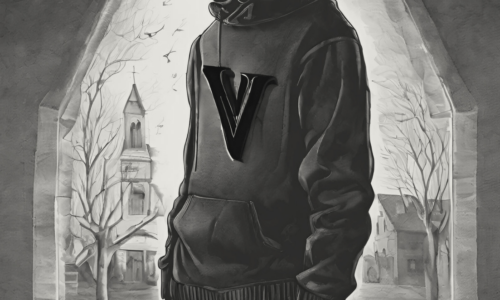Four months ago, we did not know who was at risk in this heath crisis. The entire population was quarantined until we found out what the issues were. The need was to not be indiscriminate in our opening-strategy and to not unnecessarily compound problems without knowing what we were potentially exacerbating. Now, it is clear that the vast majority of children are not at risk. In fact, most people are not at risk, if they do one simple thing. What is that thing?
We know that distancing by three feet or more reduces the chances of catching COID to less than 3%. Here is what was published in Lancet, a respected medical journal. “The chance of transmission at a distance of less than 1 meter (3.3 feet) was 12.8%, while that fell to 2.6% at a distance of more than 1 meter (3.3 feet). It added that distances of 2 meters (6.6 feet) could be more effective.”
Imagine if we all learned to keep our distance. That one thing would reduce this crisis to being manageable until there are medical answers that are more permanent. It would also teach some really important life lessons.
It is pretty clear that kids seem to be more at risk to things beyond COVID-19. The psychological and emotional fallout from a face-covering order is something we are not talking about. Additionally, there is something very important that we are NOT teaching our kids. The new at-risk population is children, not only the medically vulnerable kids, but all children. Here is my reasoning and here are some things we are not currently doing.
Governmental orders for universal face-coverings for children do not take into account psychological damage from face-coverings on kids and the mandate provides a mamoth diversion from one integral core value that we as Christians hold. First, let me speak to the prior point. None of the Department of Education directives address the psychological ramifications of face-covering orders at all. People who compose and impose them don’t want to entertain the long-term implications, so they avoid that part of the discussion. It is just easier to come up with a short-term solution, something we can visibly see. However, we must talk about this. Second, we fail to use the crisis as a platform to teach internal monitoring. This is even more of a travesty. Let me explain.
So, how are children vulnerable, really? Not from floating water droplets, providing people are more than three feet apart. Kids are vulnerable to emotional trauma from irrational fear and the myth that the mask will protect them in social movement. They are vulnerable because they don’t have the skill to know the value of social distance as principle of life.
Kids are especially vulnerable to our negligence in failing them and depriving them of the lost instruction that is right before us—that we measure people before we approach them. I am not just talking about physical measurement but spiritual measurement and spiritual distancing. Educating children about the value of distancing has great value at a spiritual level. It teaches kids about risk, reward, and danger. It causes them to reflect before they get to close. I want my child to distance him/herself from drug dealers, bullies, morally compromised people, and people with agendas.
David in the Bible said it this way in Psalm 1:1-2: “Blessed is the man that walks not in the counsel of the ungodly, nor stands in the way of sinners, nor sits in the seat of the scornful. But his delight is in the law of the LORD; and in his law he meditates day and night.”
There is danger in eroding social distancing when the consequences are clear. We need to teach kids about the viral load the lingers in the air when we are walking, standing, and sitting among people with whom we have no business drawing near. If I do not walk with the ungodly, stand with them, and then sit with them, I won’t get spiritual COVID. I should reflect before I approach. I want my children to know that. I want our kids at school to know that. I want the parents of our school children to know that. Distance and reflection are careful, necessary life-skills.
On the positive side of the distancing question, when do I draw near? I don’t social distance from my Bible. I draw near. I meditate day and night on what it says. I put my roots down alongside that stream, just as deep as I can get them (Psalm 1:3).
What does that mean for schools, when kids get out of their car and say, “Bye Mommy!”? The real challenge is distance and education, not face-coverings. The endless questions about face-coverings reveal an intuitive, common sense doubt about the governmental solution for a return to school and what is important, namely, spiritual safety.
A face-covering order wrongly puts the focus on the visible external law of placing something on the face of a child and not on the internal, self-regulating ability of a kid to control distancing variables and measure risk. This latter idea seems to be a much more important educational objective that allows little ones to socially interact and learn valuable behaviors.
Distancing rationales also seem to create a priority of planning for organizations, a priorty that involves a communication strategy that addresses the importance of keeping your distance.
How can we keep kids learning? It is not by telling him or her that when they leave the house, “Be sure to wear your mask, even if no one is around.” We should have them constantly asking, “Is someone within three feet? Are they a risk? If not, chances of contraction or communication of illness are low. Also, remember not to sit at the feet of the scoffer. You will surely catch something.”
When it comes to kids and schools, the strategy becomes a social one, a touching one, and a spiritual one. It is learning a new spacing in social settings, even a moral spacing. This is called ‘proxemics,’ the science of understanding how distance between people affects communication and social development in culture.
So, who is the at-risk population? It is all children who need to learn life principles, ones they own through self-regulation and distancing. We are right now in the history of culture in a position to properly teach children one of the most critical lessons of life, how and when to distance ourselves from others as well as where and when to draw near.
The readjustment of cultural norms is hard, especially for young people who don’t always understand the reasoning. They want to be with their friends. However, at least for now, distance-learning is taking on new meaning that has eternal value. It is our job to be the teacher.
Imagine if we raised up a generation of children that knew to say ‘no’ to approaching someone who would pollute their lives with some viral strain of sin-disease. Therein lies the vaccination remedy. That child would say to someone else, “Please keep your distance. God has placed a whole life ahead of me, and right now things are looking good. I don’t want to get sick.”





